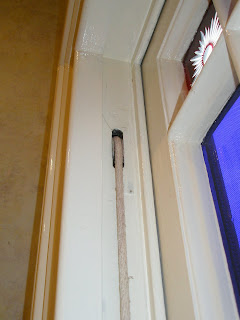Water
Amongst many things, the Scouting Movement is associated with the expression “Be prepared”. A more classical interpretation might be “Forewarned is Forearmed” but both apply perfectly when it comes to property maintenance. Having a building problem is not a case of If it happens but rather When, for it is inevitable. To save time and unnecessary trouble a good start is to know the answers to these basic but rather crucial questions:
- Where is the water meter located and how do I turn off the water.
- Where is the gas meter and how does it shut off?
- Where is my switch board and which switch shuts off the power? (try saying that three times).
These questions will sound simplistic to many but it’s surprising just how few owners and tenants know the answers. Problems are not always going to arrive during business hours so be prepared in the event things go array at an awkward hour. A common maintenance issue is the dripping tap and whether your tap is older styled or the more recent single flick-mix variety, turning the water off is the same. If you live in a house, the water meter is generally located just inside the front boundary and usually to the left or right (often covered by vegetation). Sometimes the meters have a loose cast iron cover which gives access to the metering dial and large tap handle. Turning the tap fully clockwise shuts off the water to the premises and should halt any major leak until a repair can be affected. Turning the meter fully off will stop all water both cold and hot.
For those in apartments or flats, individual turn off points vary. Older blocks will typically have them (hopefully labelled) running along the lower sections of the side or rear outer walls. Newer blocks will have them neatly displayed behind access panels in the buildings interior. If you cannot find yours please ask, as it really is important to know. I once received a phone call in the early hours of the morning from a frantic but apologetic tenant. Their bathroom tap had dramatically broken off in the middle of the night and despite shutting off a meter, water was still pouring into the Bathroom and out onto the carpeted floor. I applauded the tenants for their efforts, at least they tried but in their panic and unfamiliarity they had actually turned off their gas meter.
If you live in a newer building or one with recent plumbing, you may not even have to venture outside. Individual turn-off taps are such a sensible idea and will save you much aggravation when problems arise. If these are fitted they can be shut off quickly and will halt water to the specific tap making it easy to replace a washer or indeed an entire tap without affecting the water flow elsewhere.
 |
An older styled toilet feed pipe. Turning off the feed to the toilet cistern will halt noisy or running toilets until a repair can be affected. Good to know if your toilet suddenly goes haywire. |
Shut off valves act just like taps and are commonly used with flexible metal- sheathed hoses. Don’t be scared of these, they are designed to be used, clockwise to turn off, anticlockwise to open. If your problem only relates to the hot water in your premises you can always turn off the tap at the unit itself, this will stop all flow of the hot water but still allow cold water taps to operate. This can be extremely useful if the repair is going to take some time or the hot water unit is readily accessible such as in a kitchen or laundry. Most units however will be located outside or within the ceiling.
 |
| Scouting Badge |
Lastly, use good metal washers, find that turn off valve and BE PREPARED.
 |
| Juliette Gordon Low, founder of American Girl Guides movement presenting an Order of Merit. Anonymous circa 1918. |
 |
| Domesticity in the Bush? From Lord Baden-Powell's 'Scouting for Boys - Boys' Edition' 1953. |










